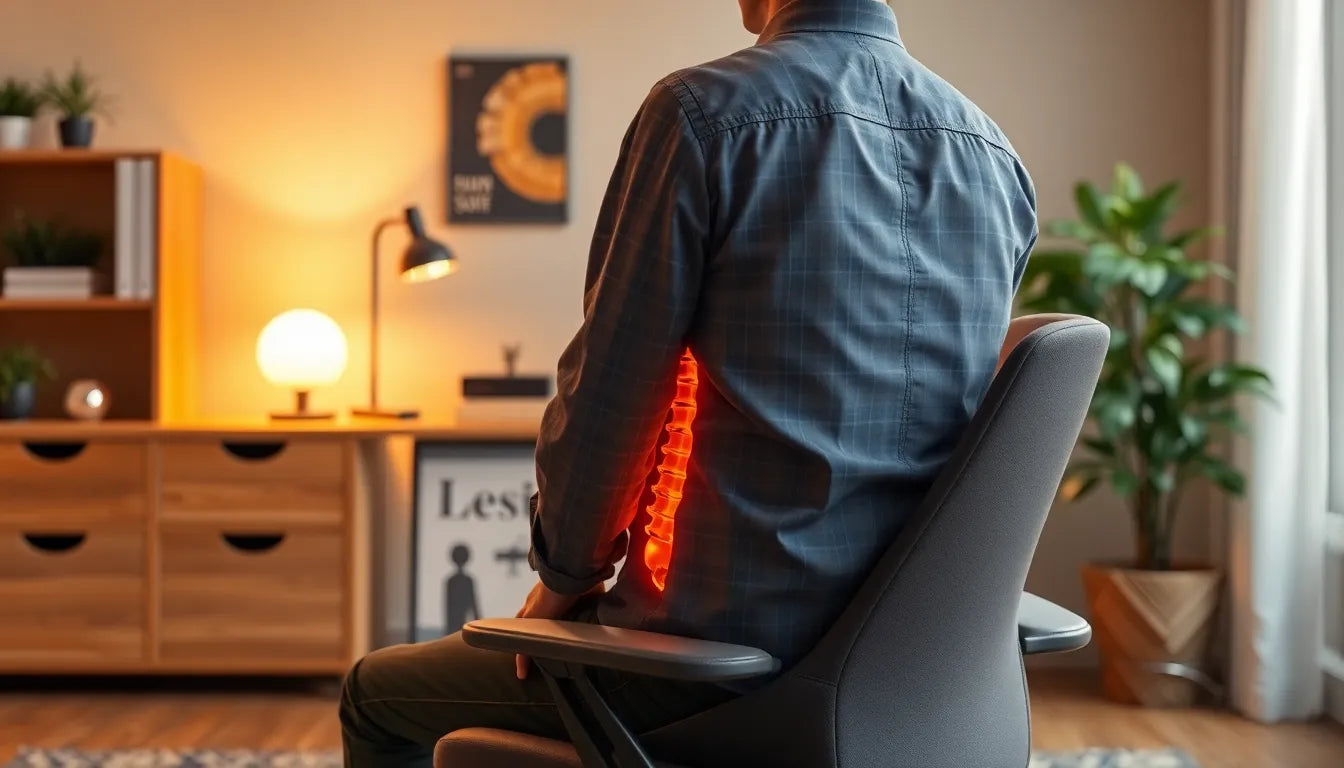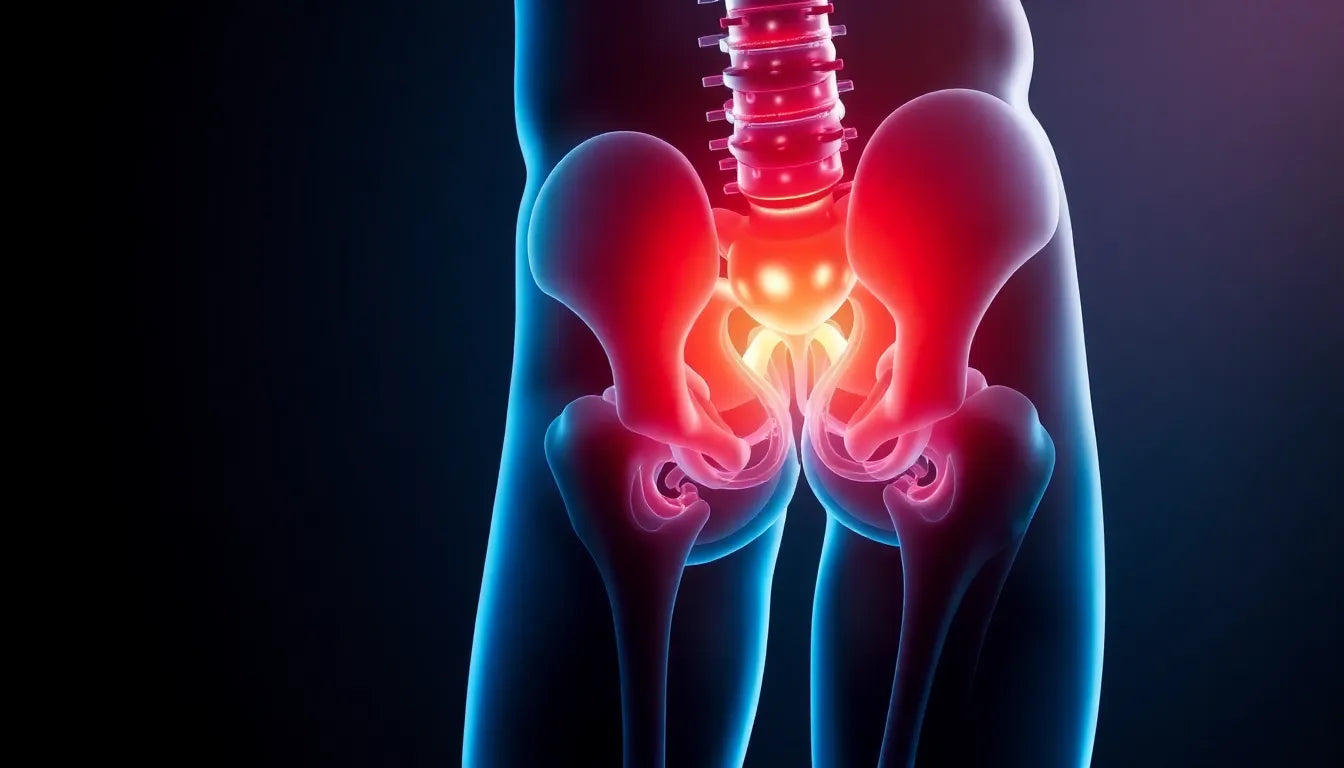Living with an L5 S1 herniated disc can be a constant battle against pain and discomfort, especially when it comes to getting a good night's sleep. The L5 S1 disc, located at the base of the spine, is particularly prone to herniation due to the significant amount of stress it endures. When this disc herniates, it can lead to intense pain, numbness, and even weakness in the legs, making restful sleep seem like an elusive dream.
Sleep, however, is crucial for recovery and effective pain management. It is during sleep that the body repairs itself, reducing inflammation and promoting healing. For those suffering from an L5 S1 herniated disc, finding ways to improve sleep quality can be a game-changer in managing daily pain and enhancing overall well-being. This blog post focuses on practical tips and strategies to help you sleep better despite the challenges posed by an L5 S1 herniated disc.
the impact of sleep position on disc pain
The way you position your body during sleep can significantly impact the level of pain you experience from an L5 S1 herniated disc. Certain sleep positions can either exacerbate or alleviate the discomfort associated with this condition. Understanding these dynamics is key to finding relief and achieving a more restful night.
For instance, sleeping on your back with a pillow under your knees is often recommended as it helps maintain the natural curve of your spine, reducing pressure on the L5 S1 disc. Similarly, side sleeping with a pillow between your knees can keep your pelvis balanced and prevent your lower back from twisting, which can ease disc pressure.
As we delve further into this topic, we'll explore various sleep positions and supportive products that can aid in relieving pain and promoting better sleep. Whether it's adjusting your sleep posture or finding the right mattress and pillows, there are numerous ways to customize your sleep environment to better accommodate your needs. Stay tuned as we uncover these practical solutions to help you sleep soundly and wake up feeling more refreshed, even with an L5 S1 herniated disc.
optimal sleeping positions for l5 s1 herniated disc relief
Finding the right sleeping position is crucial for alleviating the discomfort caused by an L5 S1 herniated disc. Each position offers different benefits, and experimenting with these can lead to a more restful night.
back sleeping with pillow under knees
Sleeping on your back with a pillow under your knees is often heralded as the best position for those suffering from an L5 S1 herniated disc. This position helps maintain the spine's natural curvature, which can significantly reduce pressure on the disc. To achieve this, place a firm pillow under your knees to elevate them slightly. This elevation helps distribute your weight more evenly and alleviates tension on the lower back. For additional support, consider placing a rolled-up towel under your lower back to further enhance spinal alignment.
side sleeping with pillow between knees
Another effective position is side sleeping with a pillow between your knees. This approach helps maintain pelvic balance and prevents the lower back from twisting, which can exacerbate disc pain. The key is to keep your spine straight and aligned with your hips. It may be beneficial to try sleeping on both sides to determine which provides the most comfort, as individual preferences can vary.
fetal position
The fetal position, where you curl up on your side with your knees drawn towards your chest, is particularly beneficial for those experiencing severe pain. This position opens up the spaces between the vertebrae, which can relieve pressure on the L5 S1 disc. Ensure that your head is supported with a pillow that keeps your neck aligned with your spine to avoid additional strain.
stomach sleeping caution
Sleeping on your stomach is generally discouraged for those with an L5 S1 herniated disc, as it can strain the spine and neck. However, if this is your preferred position, modifications can help reduce strain. Place a thin pillow under your hips and abdomen to help maintain the spine's natural alignment. Avoid using a thick pillow under your head, as this can lead to neck discomfort.
reclining or semi-fowler’s position
For some individuals, sleeping in a reclining position can offer significant relief. Using a wedge pillow or an adjustable bed to elevate the upper body can decrease pressure on the lumbar region. This position is particularly helpful for those who experience sciatica or severe pain, as it can reduce tension on the lower back.
supportive products for enhanced sleep
In addition to finding the right sleeping position, utilizing supportive products can further enhance sleep quality. A supportive mattress is essential, with memory foam options often recommended for their ability to contour to the body's shape and provide consistent support. The right pillow is equally important to maintain neck and spine alignment, preventing additional strain.
Additional aids such as rolled towels, knee pillows, and wedge pillows can provide targeted support and comfort. If traditional beds are uncomfortable, experimenting with sleeping on a firm surface, like a yoga mat, may offer relief. It's important to remember that individual needs vary, and what works for one person may not work for another.
emphasis on individualization and pain triggers
Ultimately, the key to managing L5 S1 herniated disc pain during sleep is individualization. Experiment with different positions and supportive products to find what works best for you. Pay attention to your body's responses and adjust your sleep environment accordingly. Additionally, consider how daily activities and pain triggers influence your sleep comfort, and make necessary lifestyle adjustments to complement your sleep strategies.
By taking a personalized approach and being mindful of your body's needs, you can improve your sleep quality and effectively manage the discomfort associated with an L5 S1 herniated disc.
Customization and experimentation for better sleep
When managing an L5 S1 herniated disc, personalization is key. Each individual's body responds differently to various sleep positions and supportive products, making customization essential for finding relief. Pay close attention to how your body reacts to different sleep setups and be willing to experiment until you find the most comfortable arrangement. This process may involve trying multiple positions, adjusting pillow placements, or exploring different mattress types until you achieve the best support and comfort.
Remember, what works for one person might not work for another, so it's vital to tailor your sleep environment to your specific needs. Consider keeping a sleep journal to track which positions and products provide the most relief and adjust your routine accordingly. By prioritizing your comfort and being open to change, you can significantly improve your sleep quality and manage disc pain more effectively.
Conclusion
To sum up, managing L5 S1 herniated disc pain during sleep involves a combination of optimal sleeping positions, supportive products, and individualized approaches. Sleeping on your back with a pillow under your knees, side sleeping with a pillow between your knees, and adopting the fetal position are among the most recommended strategies for reducing lumbar pressure. Additionally, investing in a supportive mattress and the right pillows can further enhance your sleep quality.
Ultimately, improving your sleep environment can have a profound impact on your overall well-being and pain management. By taking a personalized approach and being responsive to your body's needs, you can achieve a more restful sleep and better manage the challenges of living with an L5 S1 herniated disc.
Frequently Asked Questions
What is the best sleeping position for an L5 S1 herniated disc?
The most recommended sleeping positions for an L5 S1 herniated disc include back sleeping with a pillow under your knees, side sleeping with a pillow between your knees, and the fetal position. These positions help maintain spinal alignment and reduce pressure on the affected disc, providing relief from pain.
Can a mattress really make a difference in my pain levels?
Yes, the quality of your mattress can significantly impact your pain levels. A supportive mattress, particularly memory foam, can provide the necessary contouring and support to maintain spinal alignment, which is crucial for reducing discomfort associated with an L5 S1 herniated disc.
How can I tell if my sleeping position is making my pain worse?
If you wake up with increased pain or stiffness, your sleeping position may be contributing to your discomfort. Pay attention to any patterns in your pain levels and consider adjusting your position or the support provided by pillows and mattresses to alleviate discomfort.
Are there any lifestyle changes that can complement better sleep for disc pain relief?
Incorporating ergonomic aids, such as lumbar support cushions for sitting and practicing good posture during daily activities, can help complement better sleep. Additionally, maintaining a healthy weight, staying active with low-impact exercises, and managing stress can contribute to overall pain relief.
Is it safe to use over-the-counter pain medications for sleep?
While over-the-counter pain medications can help manage pain, it's important to use them cautiously and consult a healthcare professional before relying on them for sleep. A healthcare provider can offer guidance on safe usage and explore alternative pain management strategies tailored to your needs.
Sources
- NY Bone & Joint. "Practical Sleep Advice for L5 S1 Herniated Disc Relief."
- Dr. Steve Silverston. "Best Way to Sit or Sleep With an L4 L5 or L5 S1 Disc Bulge." YouTube.
- Pain and Spine Institute. "Comprehensive Guide to Sleep Positions for Disc Pain."
- Spine-health. "Evidence-Based Sleep Strategies for Spinal Alignment."
- Florida Surgery Consultants. "Pros and Cons of Sleep Postures for L5 S1 Herniated Disc."
- Fitness4BackPain.com. "Individualized Sleep Solutions for Back Pain Relief."
- Better Health Alaska. "Tailored Tips for Sleeping with an L5 S1 Herniated Disc."
- Dr. Steve Silverston. "How to Sleep with L4-L5 L5-S1 Disc Bulge." YouTube.


















